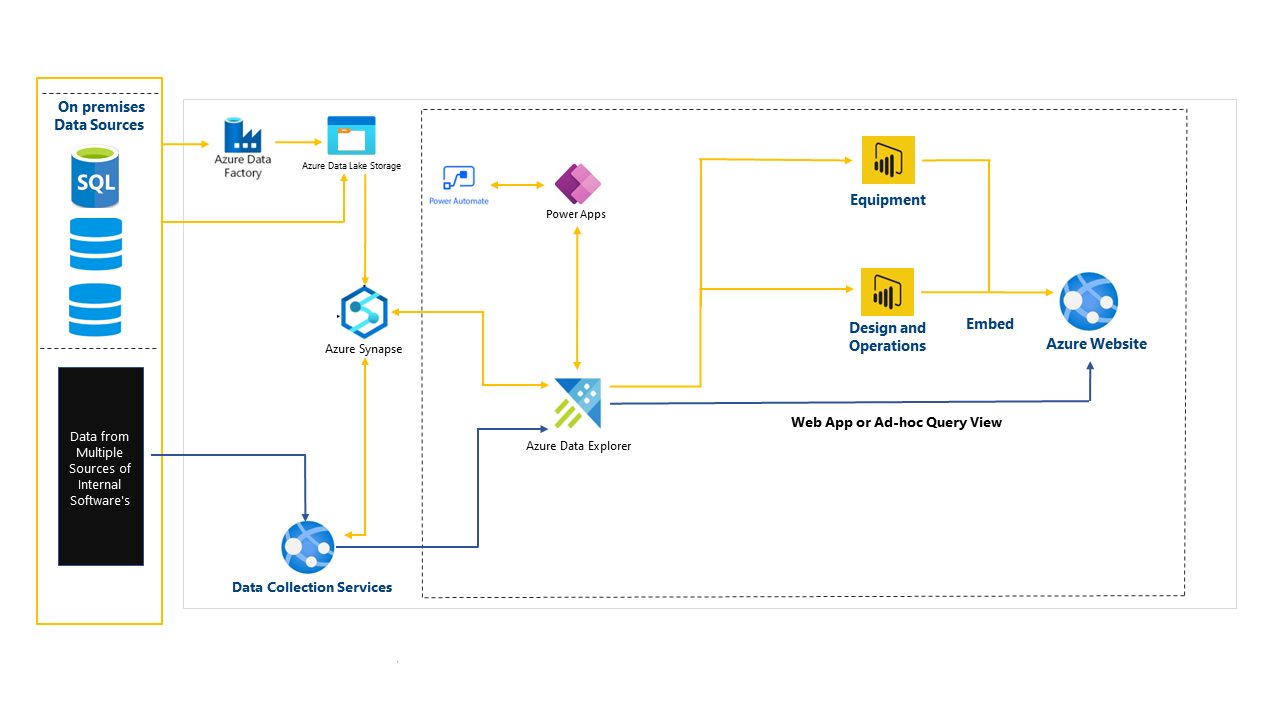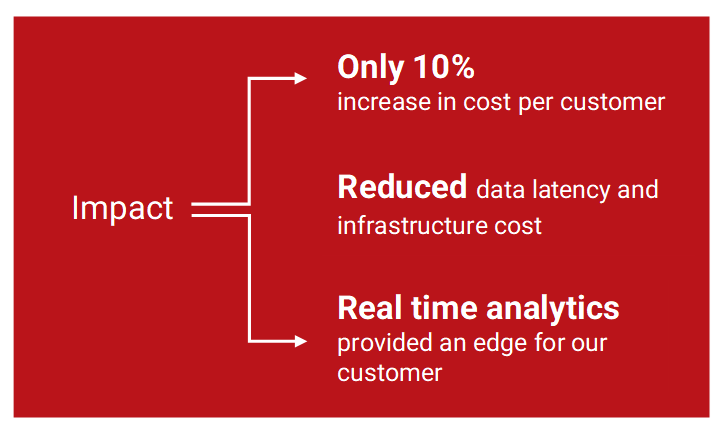Out of step with the world of analytics
Like any other, the real estate industry is one that has many gaps. Our client—a Fortune 500 company from this
industry—fills one of these gaps by offering design software that allows designers globally to build 3D models
of both residential and commercial structures.
Though successful, they were not without their challenges. One area that their competitors excelled in was analytics. Our client struggled to gain real-time insights from large volumes of data generated from various applications, ranging from web to mobile to desktop. To stay ahead of the competition, our client needed a solution with scalable architecture, improved data latency, and faster data processing to manage this considerable amount of data while also lowering infrastructure costs.
Though successful, they were not without their challenges. One area that their competitors excelled in was analytics. Our client struggled to gain real-time insights from large volumes of data generated from various applications, ranging from web to mobile to desktop. To stay ahead of the competition, our client needed a solution with scalable architecture, improved data latency, and faster data processing to manage this considerable amount of data while also lowering infrastructure costs.
The ask
•
Ability to analyze data from multiple
sources in real time.
•
Reducing the cost per license.
 |
| Figure 1: Solution Architecture |
ADX: The key to our problem
Our client wished to analyze their data in real-time, but traditional methods using legacy systems would’ve been too costly. So, we set out to find the best solution.The first step was to perform explorations such as optimizing the existing architecture, using Data Lake architecture, and streaming solutions. After thorough testing and evaluation of various design patterns and services, we decided on the perfect fit for our client: Azure Data Explorer (ADX). With ADX as our go-to repository for data, a solution that streamed or batched data every few minutes was created, keeping costs low, enabling seamless scaling, and achieving impressive performance—all thanks to ADX’s powerful computational capabilities.
 |
| Figure 2: Impact |

